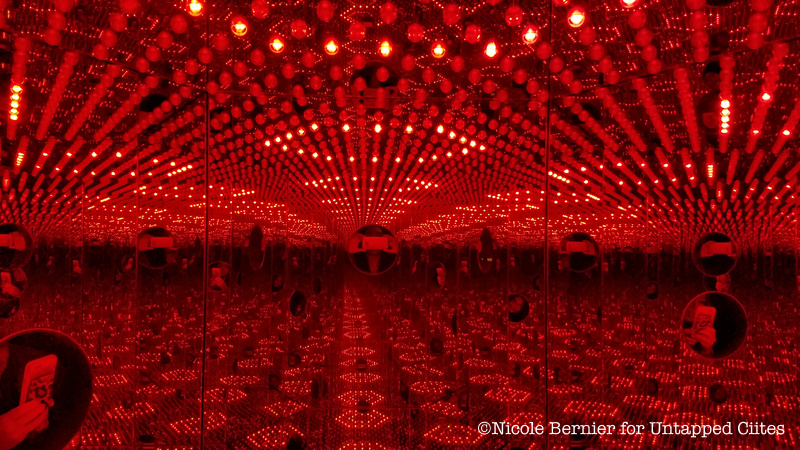
While polka dots are often associated with 1940s patterned skirts, Yayoi Kusama has dedicated her life’s work to the small spherical shapes. She describes the dots as “(unable) to stay alone; like the communicative life of people, two or three polka-dots become movement”¦Polka-dots are a way to infinity.” Who knew that such small dots had such great power?
A compendium of her work is on display at the Whitney Museum, beginning with her phallic protrusions in the 1960s up until her present day polka dot-saturated canvasses. Letters written to various other artists and photographs from her happenings are also on exhibition. One of the most memorable pieces is Fireflies on the Water, on display consists of a mirrored room, covered in multicolored lights, in order to covey infinity. The exhibition continues through September 30th, 2012 at the Whitney. Her exhibition is sponsored by Louis Vuitton, with whom Kusama has recently collaborated with to create a new collection.
Yayoi Kusama was born in Japan to a wealthy, conservative family in 1929. During her childhood, she suffered from hallucinations, often associated with suicidal thoughts. While in school, she studied Nihonga painting, a severe style that she disliked because of the master-disciple system through which it was taught. Since, she has taken on her own style of art, often covering huge canvasses in tiny polka-dots. She has also covered inanimate objects such as shoes, chairs, and suitcases with phallic cloth creations, which have become a signature style of hers as well.
Upon her move to New York in 1958, she quickly became a leader in the avant-garde movement. Her close friends consisted of Georgia O’Keefe and Eva Hesse, and although her work was respected, she failed to profit fiscally from her pieces. Kusama became known for her provocative instances that she held in various public places such as Central Park and Brooklyn Bridge, which often involved nudity and her own presence in the subsequent photos taken of the event. In the late 1960s, she would stage live performances and would paint polka dots on naked performers. One of her most famous works of the decade, entitled Narcissus Garden, caused quite a stir when she displayed it at the Venice Biennial, an event to which she was not invited. The stainless steel balls featured in the piece capture the reflection of the audience, holding the visual world captive.
In the 1970s Kusama moved back to Japan, and checked herself into the Seiwa Hospital for the Mentally Ill, and has lived there since. Initially considered a forgotten artist, retrospectives in the late 1980s and 1990s have since sparked international interest.
Whitney Museum [Map]
945 Madison Avenue






